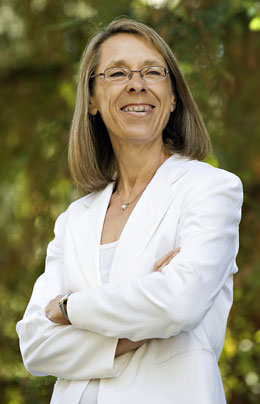Volume 26 · Number 1 · Fall 2008
Letter from the Editor
Welcome to Our Centennial Issue
Dear readers:

(Photo: Karin Higgins/UC Davis)
It seems like only yesterday that I joined the staff of UC Davis Magazine, hiring on in 1984 just months after the magazine was launched as part of the campus’s celebration of its 75th anniversary. Our first five issues featured a year-by-year recap of the campus’s history, and though I had been a student here, it wasn’t until I spent many hours hunched over the microfilm reader doing research for that project that I really came to know the place. What struck me was how the dedication and enthusiasm of so many people—from founders to faculty to students and staff—had turned the loftiest of plans into reality, changing a patch of flat, dry farmland into an institution that has educated generations and put new knowledge to work improving lives throughout the world. Over the next 25 years I was privileged to watch the university in action up close—to see how it brought together and supported the efforts of so many individuals who used and shared their talents in ways that transformed both students and society.
Now here it is 2008—our Centennial.
One hundred years ago, in fall 1908, the first 109 students took their seats at the new Davis campus. It had been established to educate farmers who wanted to improve their operations, and it opened that year with just a dormitory (North Hall), a creamery, a dairy barn, a livestock pavilion (now Wyatt Pavilion Theatre) and a plan that called for a dozen or so buildings to be arranged around a rectangular field, the Quad.
The University Farm, as it was known in the early days, grew slowly during the first four decades. Initially a mere branch of Berkeley’s College of Agriculture, it added the School of Veterinary Medicine in 1948 and the College of Letters and Science in 1951. Then, in 1959, it was named a general campus of the University of California with the authority to add new majors, schools and colleges and expand its graduate programs, which launched a period of rapid growth that continues today.
This fall, more than 30,000 students will take their seats. Now a major comprehensive research university, UC Davis is a member of the prestigious Association of American Universities, making it one of 62 of the leading research universities in the nation. It is first in physical size and third in enrollment among the 10 UC campuses. It offers more than 100 academic majors and 86 graduate programs and is a national leader in biological science education. The university stretches from centers in Bodega Bay to Lake Tahoe to Tulare to Washington, D.C. It boasts a medical center that is among the top 50 hospitals in the U.S. and the only level I trauma center in the region. Major new facilities include a regional performing arts center, wine and food institute, genome building, Aggie Stadium and innovative student housing. New buildings at the Sacramento campus consolidate the School of Medicine and will soon house a new School of Nursing. On the Davis campus, this former farm is now a city, with its own police and fire departments, landfill, wastewater treatment plant, airport, electrical substation and telecommunications systems.
So there is much to celebrate. And UC Davis Magazine is once again taking part. We have devoted our fall issue from start to finish to the UC Davis Centennial. You’ll see that we’ve suspended some of our usual departments in order to fully feature the campus’s many accomplishments, to take both a look back and a look ahead.
You’ll find a story recounting many of the campus’s traditions, from the Tank Rush to frosh dinks. We’ve tracked down alumni who were the movers and shakers and groundbreakers in their student days to see what they’re doing now. We give you a glimpse of how the campus will look tomorrow. And our centerpiece is a chronicle of 100 ways that UC Davis has changed the world.
So please join me as I look back over my 25 years here and over 100 years of campus history, as I get nostalgic about yesterday, feel proud about where we are today and get excited about tomorrow. Let’s celebrate!
Teri Bachman, M.A. ’82
Editor
